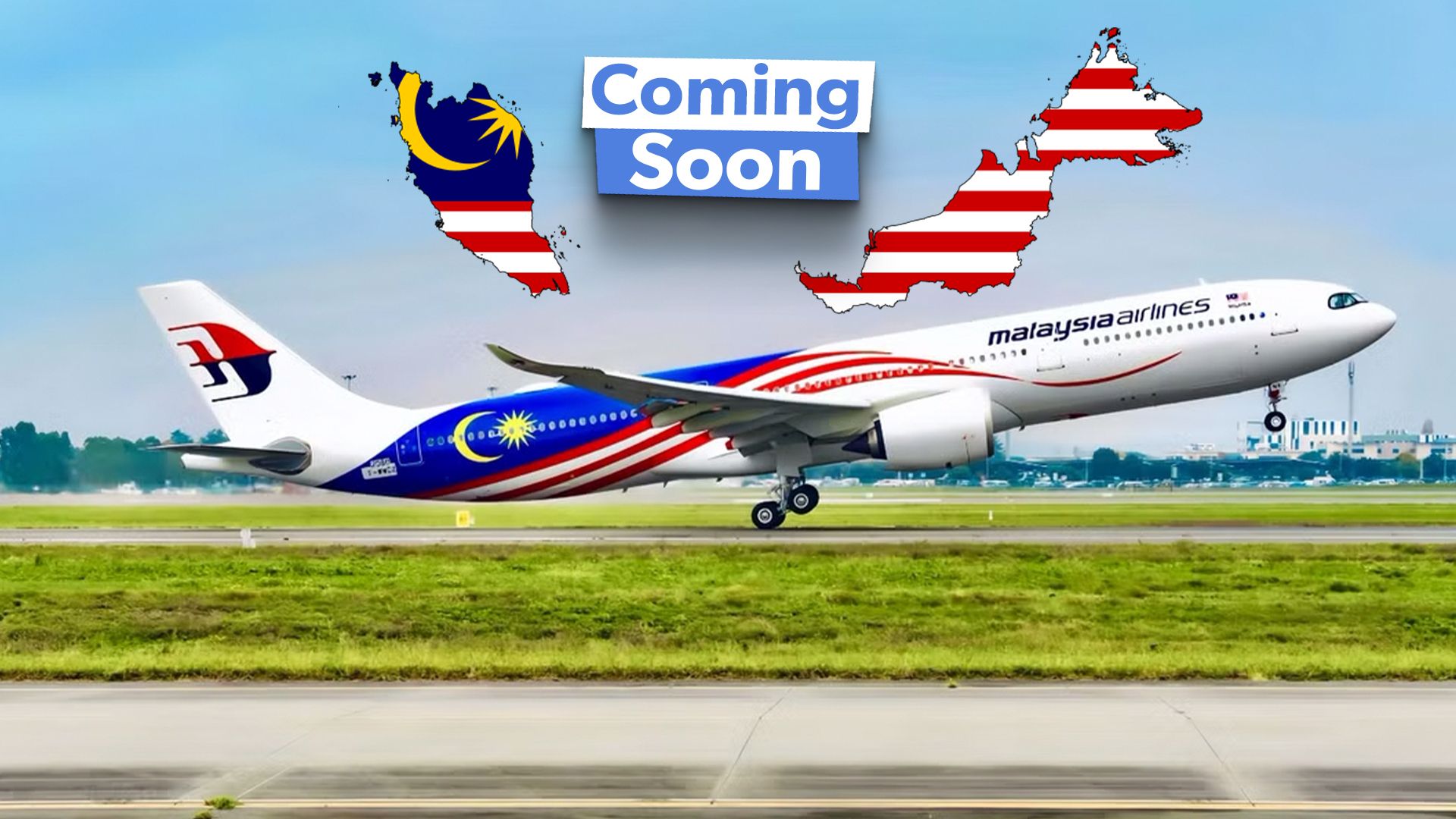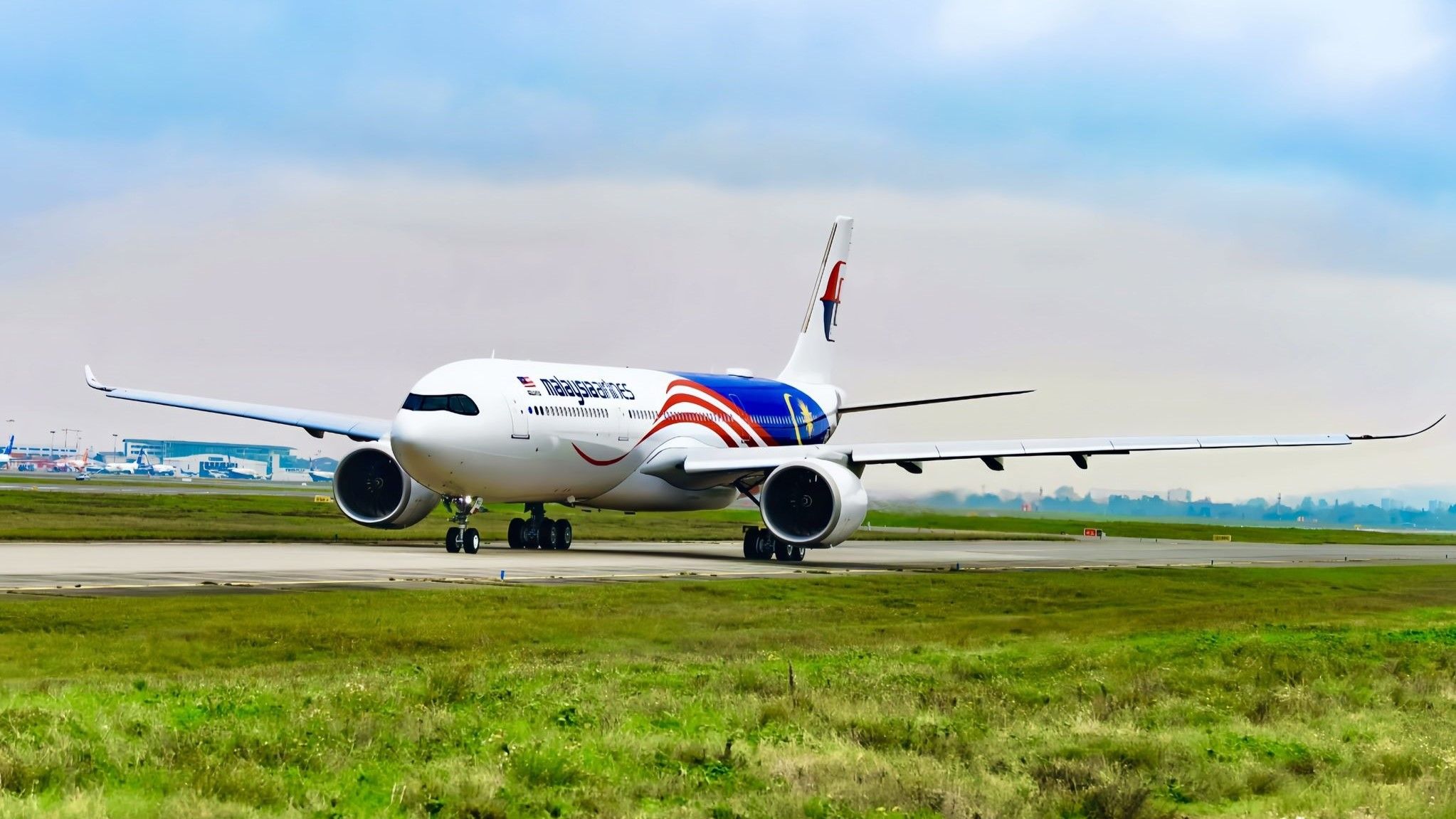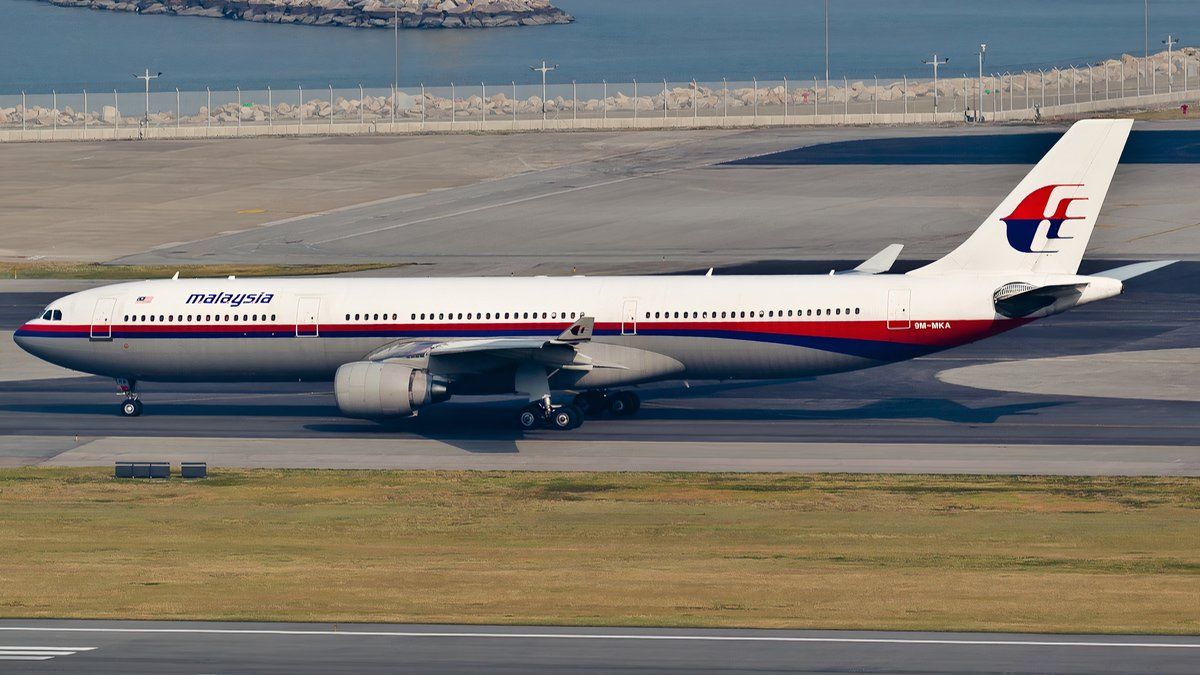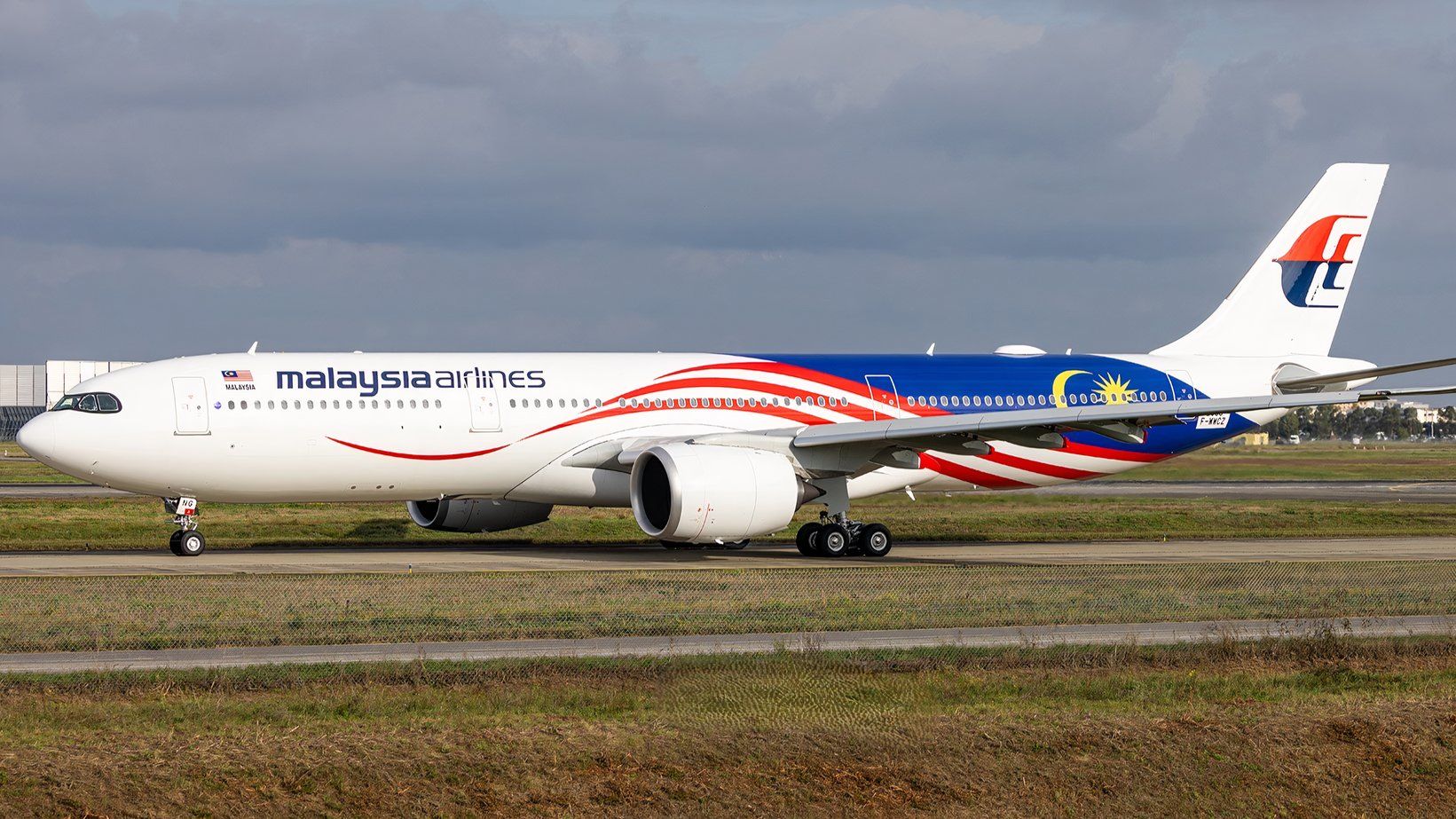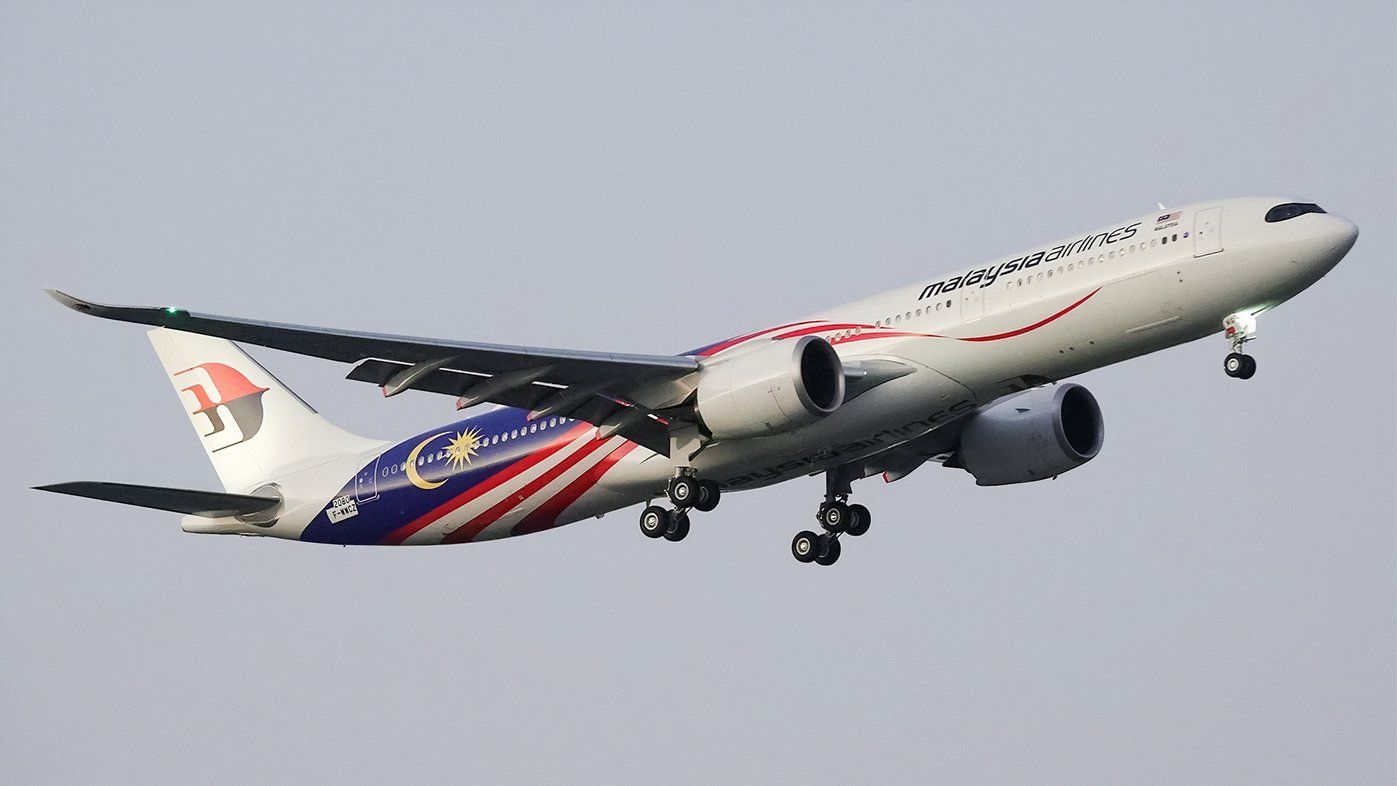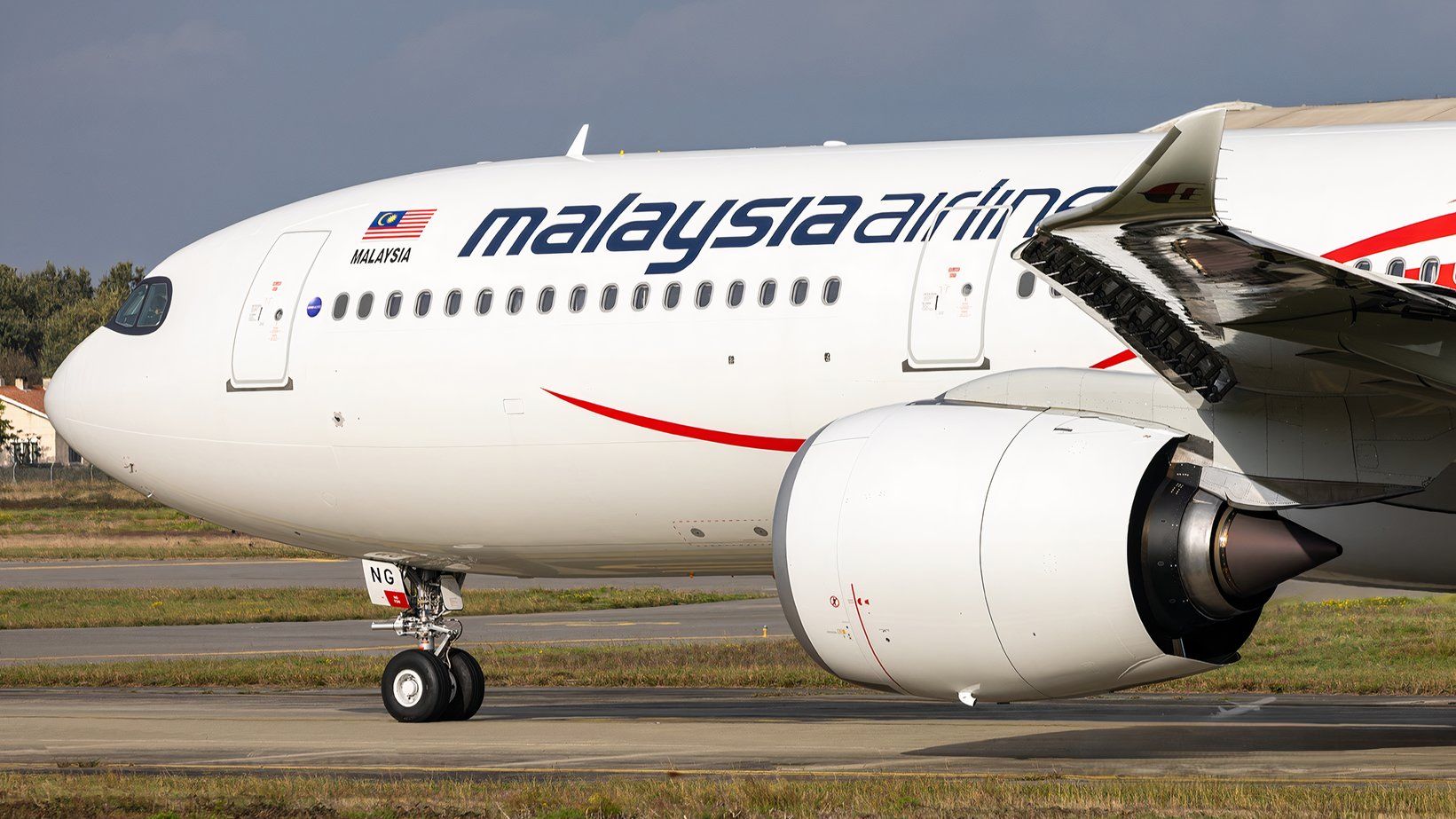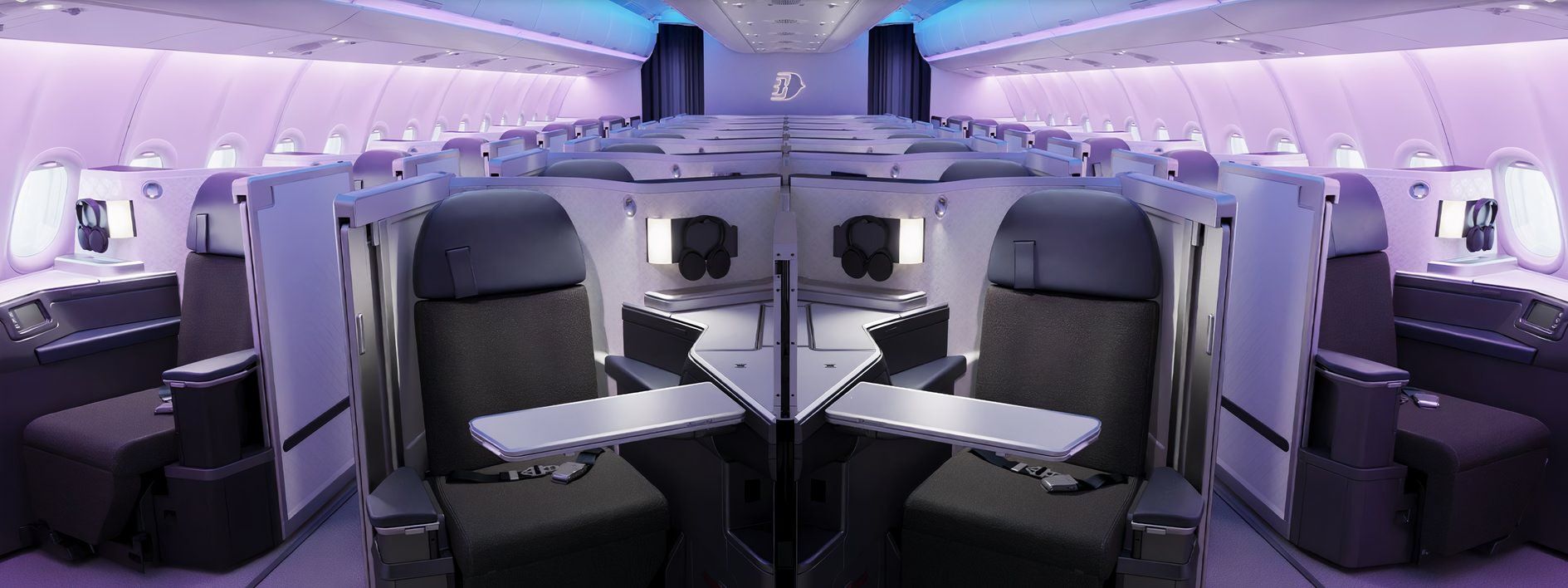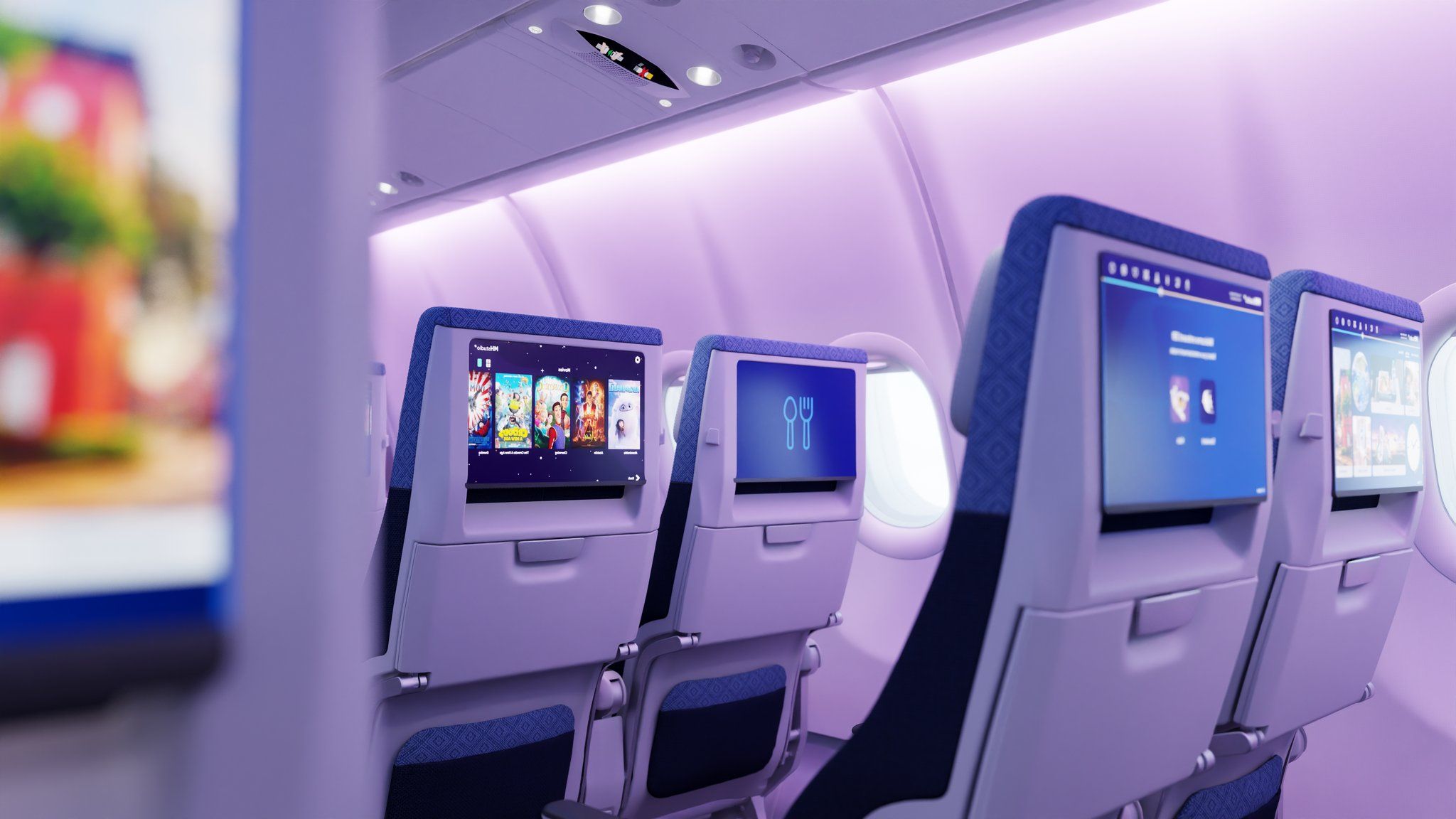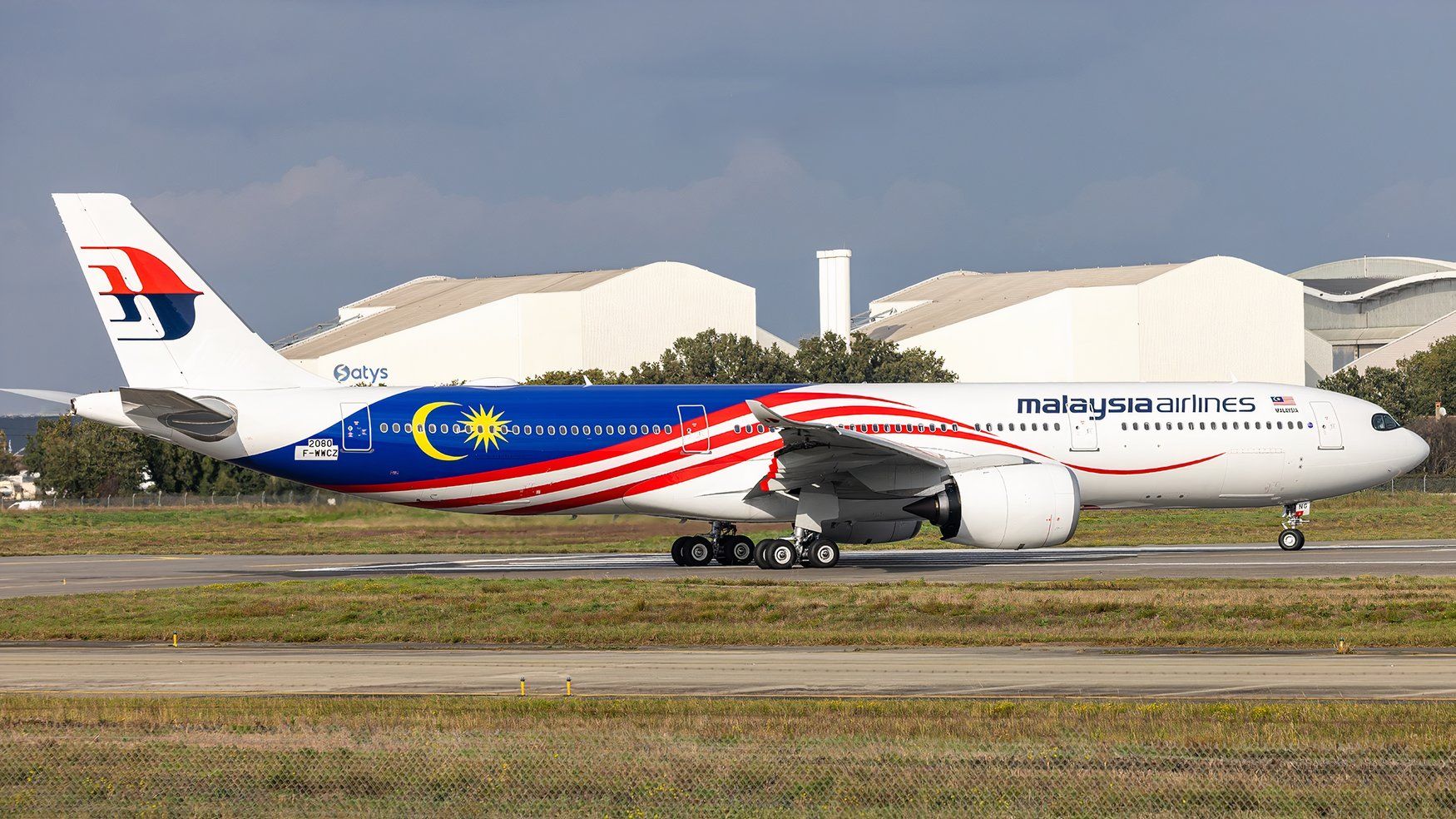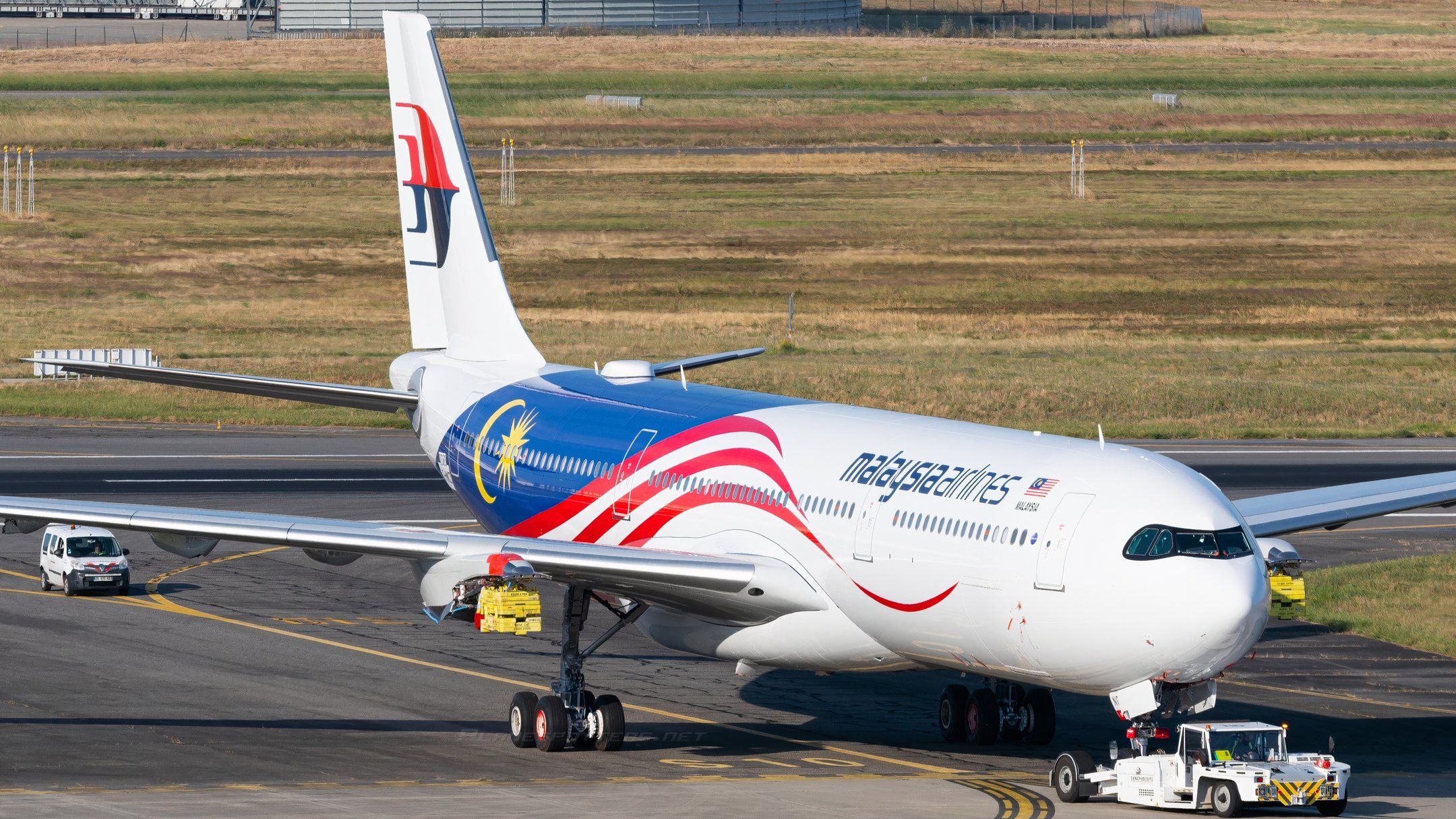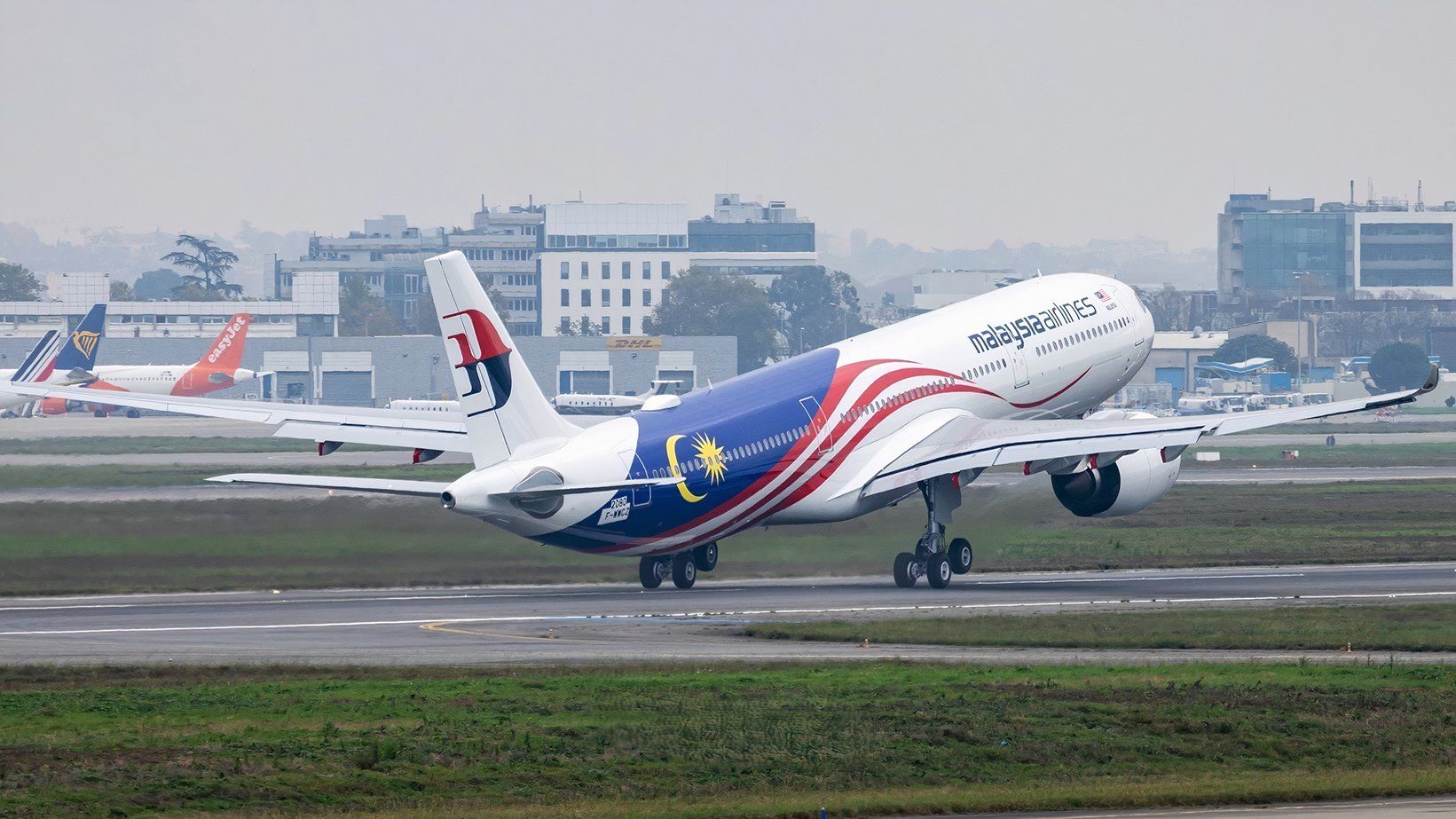The first Airbus A330-900neo for Malaysia Airlines (MH) recently took to the air for its first test flight at Airbus’ facility in Toulouse, representing the first of an order for 20 of the aircraft that the airline placed back in the summer of 2022. The new aircraft type is set to transform MH’s fleet considerably over the next few years, as well as fuel medium-term growth for the beleaguered carrier, so let’s take a closer look at what we know so far about the A330-900’s introduction into service at MH.
Photo: Malaysia Airlines
Malaysia Airlines’ history with the A330
Malaysia Airlines has a long history with the Airbus A330, being one of the first airlines to operate the type. The A330-300 first flew commercially in 1994, and MH took delivery of its first aircraft (9M-MKA), the 16th to be produced by Airbus, in early 1995. Since then, MH has operated a total of 43 A330s, and currently maintains a fleet of 24, comprising 9 A330-200s and 15 A330-300s.
Photo: Malaysia Airlines
So, it was no surprise that MH signed an MOU in 2022 for 20 new A330-900s, split between ten leased from Avolon and ten direct purchases that will be sold to and leased back from Avolon. As MH looks to rebuild from its recent financial woes, the A330neo offers continuity with the existing fleet of A330s and A350s, and therefore cost savings that a comparable Boeing 787 wouldn’t be able to match. MH will also have noticed the popularity of the A330neo with other legacy A330 carriers in the region, including Cathay Pacific, Vietjet, Garuda Indonesia, T’Way, and Cebu Pacific, all of which have placed sizable A330neo orders recently.
Photo: Malaysia Airlines
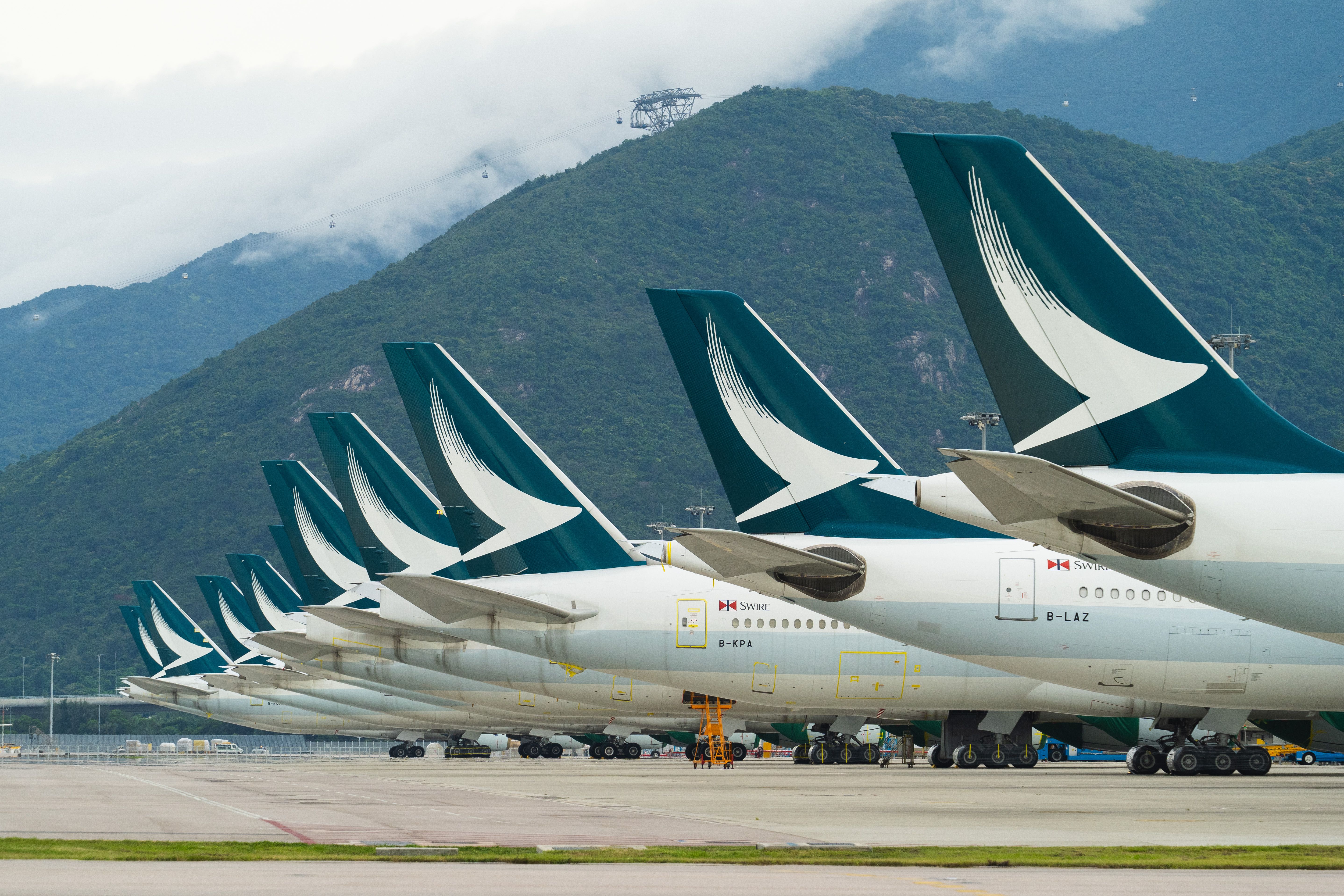
Related
Cathay Pacific Orders 30 Airbus A330neo Planes To Serve Regional Routes In Asia
The airline has signed an agreement with Airbus for 30 firm orders and 30 options for the A330-900.
The A330-900 delivery schedule
MH originally had its first A330-900 scheduled to enter the fleet in Q3 2024 but announced last month that this schedule was pushed back due to delays at Airbus. It is now expected to take delivery of its first aircraft, which is expected to be registered as 9M-MNG, later this month. This should put it on track for its first commercial flights before the end of the year.
Photo: Malaysia Airlines
While Malaysia Airlines CEO Izham Ismail says that his company is “deeply disappointed” by the delays at Airbus, he is nevertheless optimistic that the delivery schedule will pick up quickly in the new year:
“The delay is not ideal, but it is not expected to impact our goal of having five in our fleet by the end of Q1 2025. The remaining 15 jets will then stream through until 2028. We also plan to begin exiting the older A330s from our fleet starting in early 2025, working on a ‘one in, one out’ basis so there are no interruptions to service.”
Photo: Malaysia Airlines
The configuration of the new Malaysia Airlines A330-900s
Malaysia Airlines is set to configure its new A330-900s with 297 seats, split between 28 in business class and 269 in economy class. This resembles its current A330-300 configuration of 290 seats in a 27 business / 263 economy split. However, the overall seat count is where the similarities end, as MH has invested in significantly upgrading its product in both classes.
Seat Map: aeroLOPA
Business class: All-new signature suites
MH’s A330-900s will debut its new ‘signature suite’ in business class, which will also be retrofitted to their Airbus A350s in a program beginning in early 2026. MH has chosen Collins Aerospace’s Elevation platform, so the suites will be familiar to those who have flown in British Airways’ Club Suites or Etihad Airways’ A350 Business Studio suites.
Photo: Malaysia Airlines
An earlier iteration of the design is also used by Qatar Airways, a key oneworld partner for MH, and likely an important part of MH’s decision-making, as Ismael explains:
“Doha is a signature route for us and the cornerstone of our partnership with Qatar Airways. We needed to put on a business class product that is equivalent to Qatar’s, especially for connecting flights beyond Doha. We don’t want customers to feel any difference in the business class, so they will see the consistency in the new product of our A330neo.”
The 28 business class seats are arranged 1-2-1 in a reverse herringbone pattern. All convert to a fully flat bed, are equipped with a sliding privacy door, and have direct aisle access. The paired middle seats have a sliding screen that can be opened for passengers flying with a partner. Seat width is 21″, row pitch is 44″, and each suite has a 17.3″ 4K touchscreen display, along with universal AC and USB sockets and a wireless charging pod.
Upgrades in economy class
The economy class has 269 Recaro CL3810 seats, arranged in the classic Airbus 2-4-2 formation. Each seat features a 4-way adjustable headrest, a retractable bi-folding table, and an independent cupholder. Seat width is 17.5″, row pitch is 32″, and seat recline is 5″, which is one inch less than on the current A330s. However, there is a significant upgrade to in-flight entertainment, as each seat has a pivoting 13.3″ touchscreen with full 4K display. Free WiFi is available throughout the aircraft.
Photo: Malaysia Airlines
The first routes for the new A330-900s
Melbourne (MEL), which currently has a twice-daily A330-300 service, was planned to take over as the inaugural A330neo route on November 25. However, owing to the A330neo’s delayed arrival, this launch will likely be rescheduled into December, with the current A330-300s remaining on the route until then.
Photo: Malaysia Airlines
After Melbourne, expect to see the A330-900s rolled out on the following routes:
- Auckland (AUK): The daily A330-300 service will be replaced with an A330-900 in early Q1.
- Tokyo (NRT): MH flies to Narita 11 times a week using a mix of A330-300s and A350-900s, and the A330-900 will start phasing in from March 2025.
- Doha (DOH): The twice-daily A350 service to Doha will also start transitioning to A330-900s in March. The A350s will be transferred to the new route from Kuala Lumpur (KUL) to Paris (CDG) that begins that month.
Although MH has not specifically mentioned them yet, other high-traffic A330 destinations that would be prime candidates for an A330-900 upgrade would be Sydney (twice daily), Delhi (daily), Seoul (daily), and Osaka (daily).
Photo: Malaysia Airlines
The longer-term future for the A330-900s
This first batch of 20 A330-900s is being acquired largely to replace the existing A330s. However, the airline also has options for an additional 20 that would be used to fuel future growth. Ismail has indicated that if taken up, these A330-900s would also be used to grow markets and routes that have already proven their worth to the airline.
“The strategy for the company is to grow, but we cannot grow blindly. We need to grow Australia, and with the the current demand, our load factor is sitting in the 90s, I see a need to increase Sydney to three times a day, and likely Melbourne as well. We will also consider double-daily to Auckland.”
Photo: Malaysia Airlines
Therefore, it’s not surprising that one new route scheduled for the region is Malaysia Airlines’ return to Brisbane in March 2025. This will make Brisbane the fifth Australian city that it serves after Sydney, Melbourne, Adelaide, and Perth.
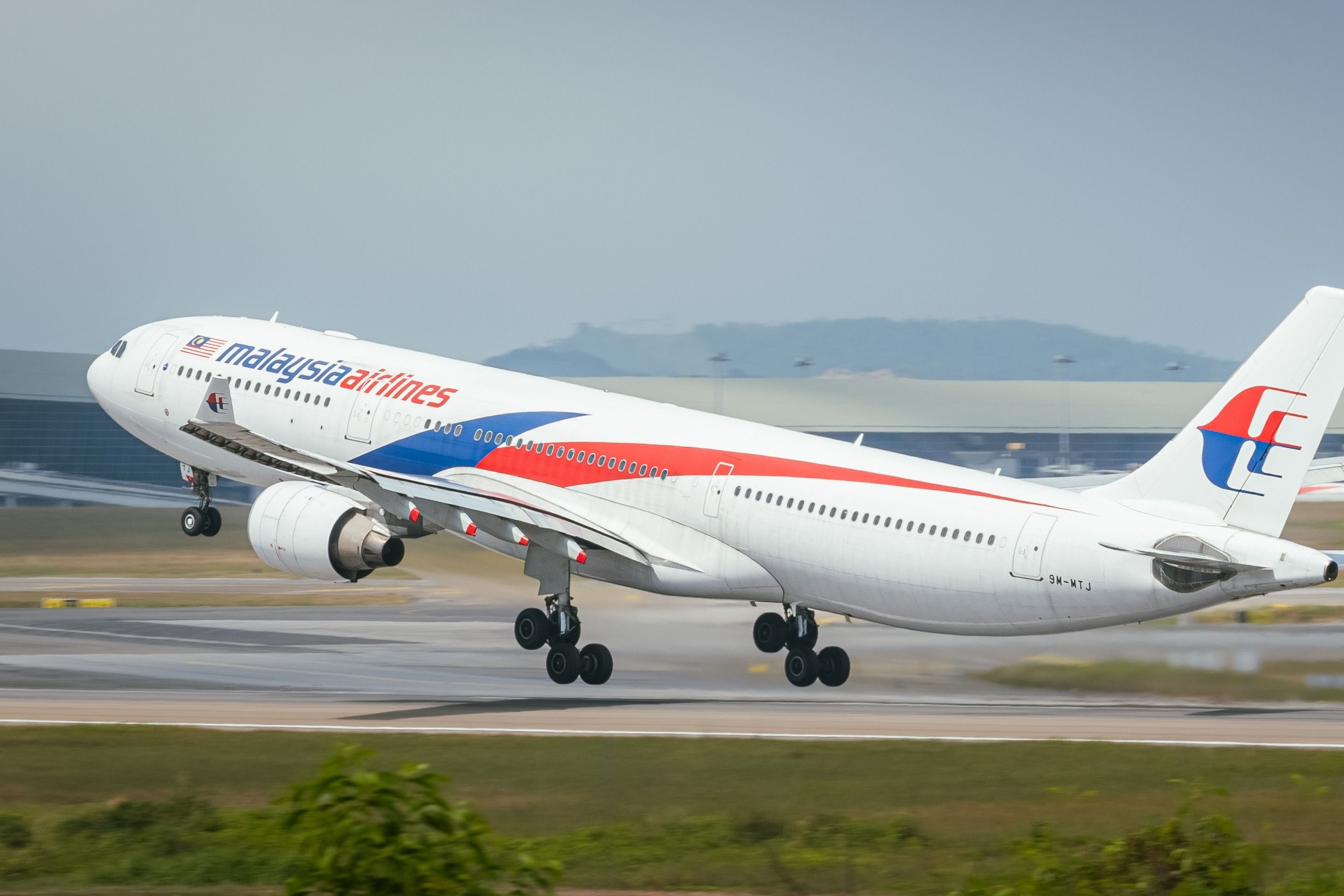
Related
5th Australian City: Malaysia Airlines Schedules Brisbane Return
When operational, the carrier will have up to eight daily flights to Australia.

